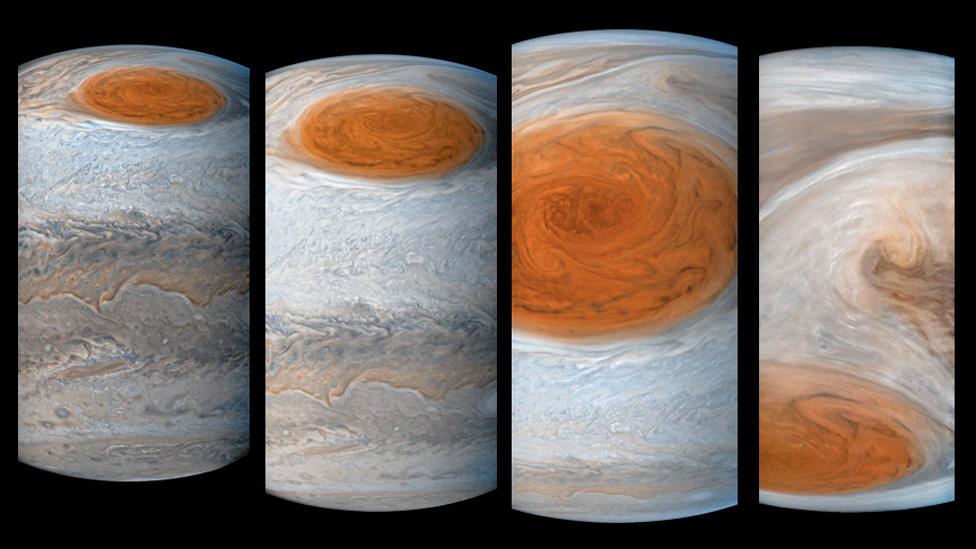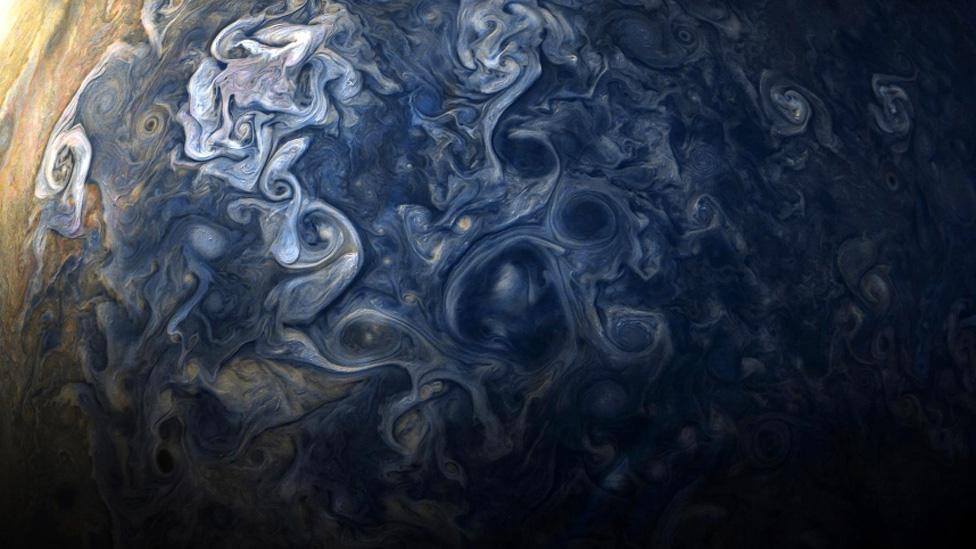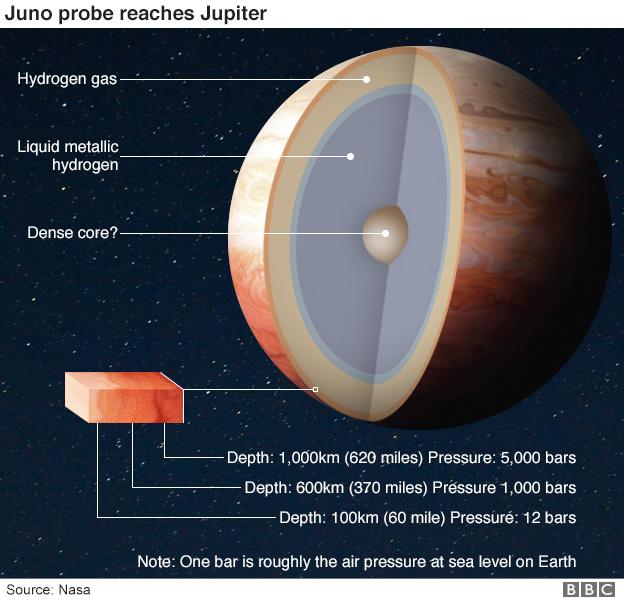Jupiter Great Red Spot has deep roots
- Published
A visualisation shows what it would be like to dive into Jupiter's atmosphere.
Scientists are beginning to unlock the secrets of the Great Red Spot on Jupiter - the biggest storm in the solar system.
This spectacular anticyclone has been in existence for more than 150 years. It is wider than the Earth.
One of the big puzzles has concerned its roots and how deep they go.
Now, the American space agency's Juno probe at Jupiter has an answer. The storm system extends down at least 350km (200 miles) into the atmosphere.
And the roots could well run deeper still.
The 350km is just the limit of what Juno's microwave radiometer can sense.
This instrument tracks the warmth (hundreds of degrees Celsius) in the atmosphere associated with the storm.
But if Juno can make some gravity measurements over the region as well, it might also detect mass movements connected with the spot down at over 1,000km below the planet's cloud tops.

Juno passed directly over the Great Red Spot back in July
"We're now putting together the 3D structure of the Great Red Spot, whereas we've only known it from a 2D perspective before," said Prof Andrew Ingersoll, from the California Institute of Technology.
"Precisely how deep the roots go is still to be determined. But the warmth we see at depth is consistent with the winds we measure at the top of the atmosphere."
Those winds move at more than 120m/second - getting on for 300mph. That is far faster than anything generally seen on Earth, including its high-altitude jet stream.
Andrew Ingersoll: "One explanation for what keeps the Spot going is cannibalism "
Prof Ingersoll was speaking at the Fall Meeting of the American Geophysical Union (AGU), external - the world's largest annual gathering of Earth and planetary scientists.
He said the Juno team wanted to understand the key mechanisms that drove the spot and kept it from dissipating.
But the data gathered on the red spot was simply not compatible with models used to study Earth's weather.
"For practical reasons, the first efforts to understand the red spot and all the flows on Jupiter borrowed computer models from Earth science," he said. But for this gigantic storm "we've got to stretch the models more than that".

One of the delights of the mission has been the way citizen scientists have interpreted its images
The team has produced a stunning visualisation of the latest data. The little film takes the viewer on a flyover of the cloud tops before a plunge into and through the heat of the spot itself.
The Juno probe arrived at the fifth planet from the Sun on 4 July last year. Since then, it has been making a close pass over the gas giant every 53 days. Its seven scientific instruments are endeavouring to reveal Jupiter's inner workings.
The mission hopes to better explain the planet's origins.
Its great size means it was almost certainly the first object to form in the solar system after the Sun. And that means its influence on everything around it has been immense.
It is impossible, says the mission team, to understand the other planets without first thoroughly knowing Jupiter.


Jupiter is 11 times wider than Earth and 300 times more massive
It takes 12 Earth years to orbit the Sun; a "day" is 10 hours long
In composition, it resembles a star; it's mostly hydrogen and helium
Under pressure, the hydrogen assumes a state similar to a metal
This "metallic hydrogen" could be the source of the magnetic field
Most of the visible cloud tops contain ammonia and hydrogen sulphide
Jupiter's low-latitude "bands" play host to very strong east-west winds
The Great Red Spot is a giant storm vortex wider than planet Earth
